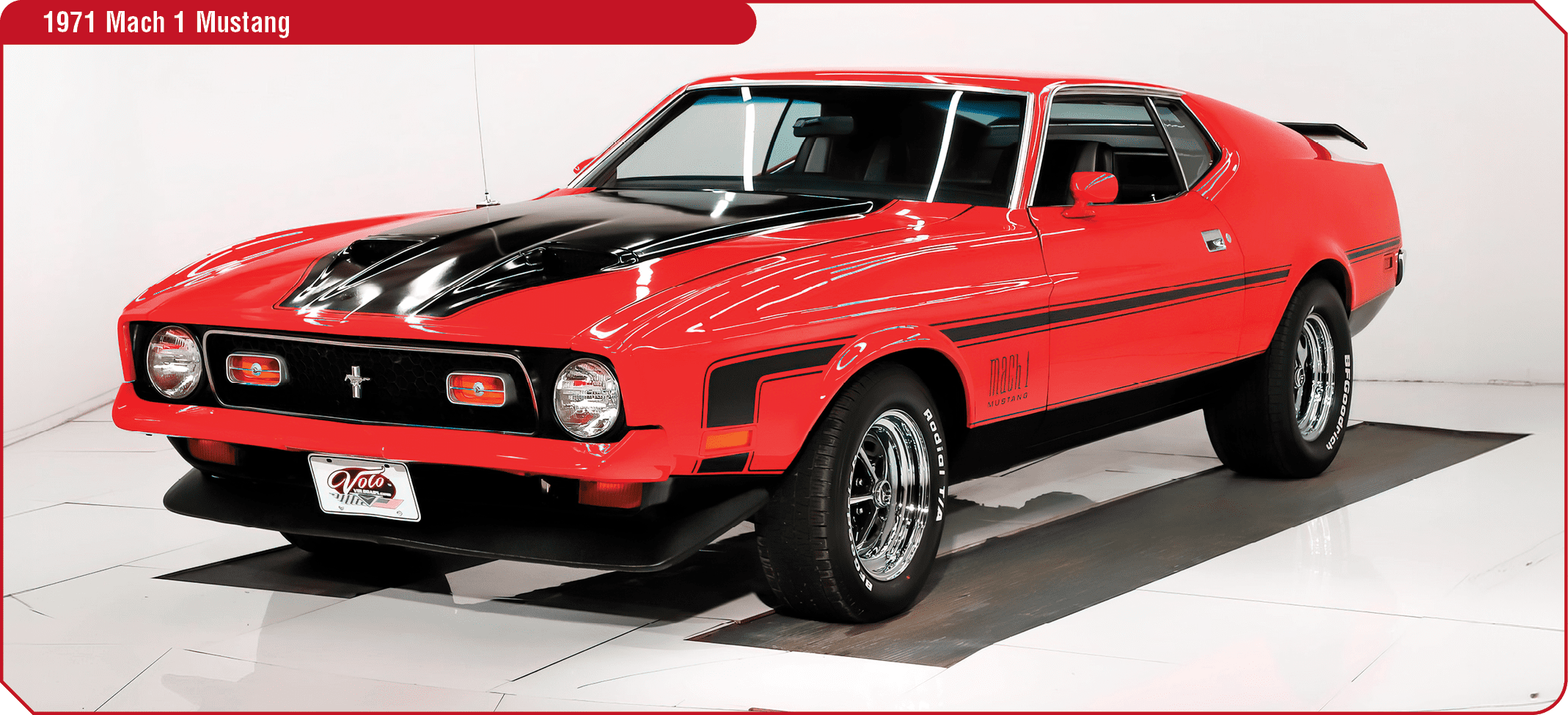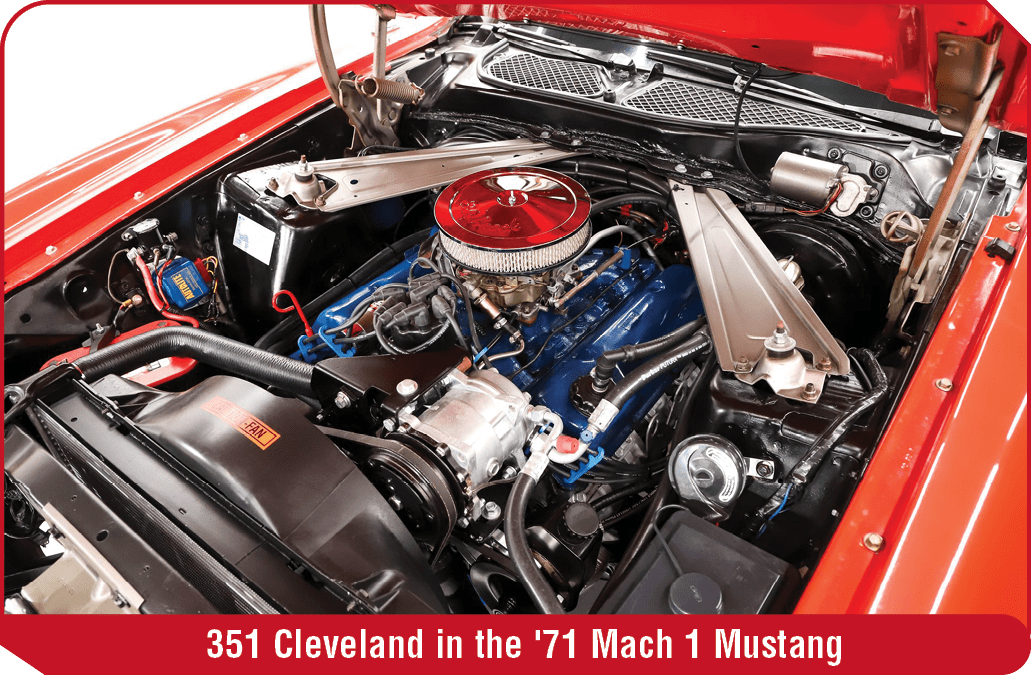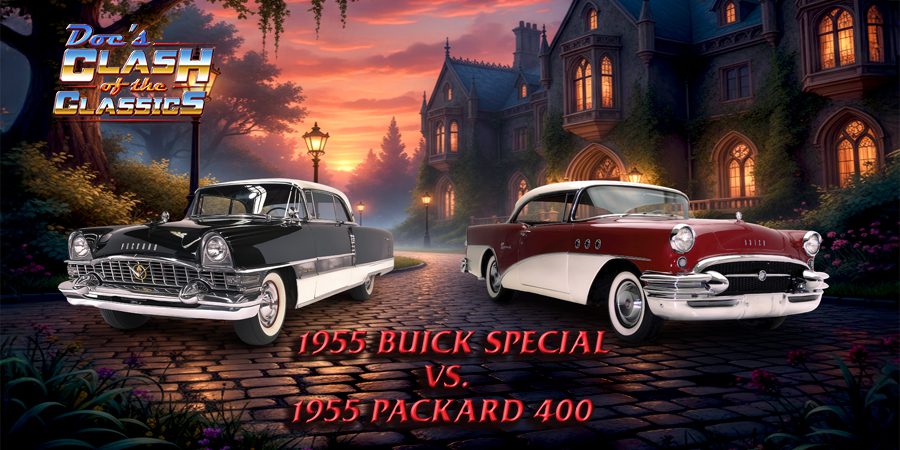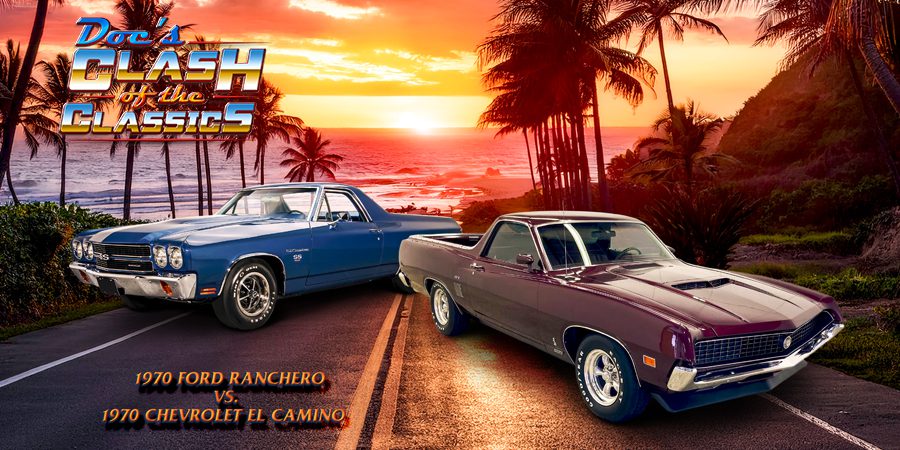Welcome once again, to Clash of the Classics. This month we’ll head back to 1971 for a look at two of the coolest cars of the period. 1971 was an interesting time in our nation. The country was celebrating both Apollo 14 and Apollo 15 Lunar landings, Led Zeppelin released what is considered their greatest album ever with the tour de force, “Stairway to Heaven”, and the second-largest stock exchange, the NASDAQ, was established in New York City, creating new opportunities for huge wealth gains.
Along with that, Detroit was creating their own brand of excitement with the release of the all-new 1971 Ford Mustang Mach 1 and the 1971 Plymouth ‘Cuda 440. Both of these cars are true classics that don’t often get the attention they deserve.
 Let’s look briefly at the Mach 1 Mustang.
Let’s look briefly at the Mach 1 Mustang.
Ford could never have predicted the success of the original Mustang, and with the dawn of a new decade, they were hungry to keep the excitement level peaking. Beginning in 1971, the first generation car received its final and most exaggerated styling changes making the car more muscle and less pony. Ford executives were concerned and wondered if consumers would receive the new design favorably.
 Overall, the car was bigger and heavier than earlier 1st gen’s. It grew in length from approximately 181 inches to 187 inches and got heavier going from approximately 2450 lbs to nearly 2720 lbs.
Overall, the car was bigger and heavier than earlier 1st gen’s. It grew in length from approximately 181 inches to 187 inches and got heavier going from approximately 2450 lbs to nearly 2720 lbs.
In 1971, the Mach 1 was available with several engine and transmission options, however, today we’ll focus on only one, the 351 Cleveland with a 4-barrel carburetor and a C6 automatic transmission. Power was rated at 300 hp with an impressive 385 lb-ft of torque. The engine was a big-budget undertaking for the Blue Oval group, in fact, on August 15, 1969, during the press release, Ford announced they would be introducing a brand-new $100 million engine designed for the 1970’s. The all-new 351 Cleveland was poised to become an automotive industry icon.
 The transmission was and continues to be one of Ford’s best-ever designs with a running production that spanned more than 30 years. The design was so reliable, it made its way into the E4OD and later into the 4R100 with production lasting through 2004.
The transmission was and continues to be one of Ford’s best-ever designs with a running production that spanned more than 30 years. The design was so reliable, it made its way into the E4OD and later into the 4R100 with production lasting through 2004.
The Mach 1 hood is arguably the most recognizable feature of the car. With dual scoops and a raised profile, it instantly gives the vehicle a unique look. Combined with the outstanding rear deck fastback shape and rear wing spoiler the car is one of the best-looking performance designs of the early ‘70s.
The new grille now stretched the entire width of the car. The wider stance, the longer hood, and the subtle body lines gave the car a larger, more muscle-like appearance.
The changes Ford implemented to the Mustang in 1971 weren’t merely cosmetic. The suspension was completely redesigned which improved handling and feel in a big way. Because the car was larger overall, the additional width helped cornering by reducing body roll giving the car a more planted feel. In addition, Ford offered a competition chassis option and a “Drag Pack” rear-end option that included either a 3.90, 4.11, or a 4.30 set of differential gears and a remote cooler.
The interior was also completely redesigned as was the instrumentation and dash layout. Considered by many to be superior to other cars in the same class, the interior feel was awesome. The seats were not only comfortable but surprisingly supportive.
The dash and instrumentation in the ‘71 and ‘72 models have always been and continue to be my favorite as the layout is purely performance-oriented. 1971 was also the first year Ford offered power windows, leather seats, a rear window defroster, and an 8-track as options.
Several years ago, I had an opportunity to own a Survivor 1971 Mach 1. Unfortunately, the owner and I were not able to reach an agreement on the price, and the opportunity was lost. However, I enjoyed the car for about a week during those negotiations and it was quite a memorable experience. Perhaps, one day, a ‘71 Mach 1 will find a new home here in my garage. Until that day, I will continue to admire from afar.
 Now, let’s look at the 1971 Plymouth ‘Cuda.
Now, let’s look at the 1971 Plymouth ‘Cuda.
When it comes to the Barracuda, the first and second-gen cars, (1964 through 1969), are typically disregarded from discussion due to their lack of style and identity. In 1970, however, the third generation was birthed, and with it came a whole new level of performance. By 1971, the car had shed all its earlier cues to the Valiant and had become a nameplate unto itself. Chrysler engineers had created what most Mopar fans consider to be the perfect muscle car both in terms of looks as well as performance.
 The simple grille of the 1970 model was replaced by a dramatic dual-headlight design with chrome ‘gills’ molded into the front fenders. The shape of the car was consistent with Chrysler’s tendency to create the long hood/short deck-type styling. The stance was wider and more sinister with the front of the car slightly lower than the rear giving it a menacing look. Incidentally, 1971 was the only year Plymouth produced the car with four headlights which has helped to define its one-of-a-kind uniqueness.
The simple grille of the 1970 model was replaced by a dramatic dual-headlight design with chrome ‘gills’ molded into the front fenders. The shape of the car was consistent with Chrysler’s tendency to create the long hood/short deck-type styling. The stance was wider and more sinister with the front of the car slightly lower than the rear giving it a menacing look. Incidentally, 1971 was the only year Plymouth produced the car with four headlights which has helped to define its one-of-a-kind uniqueness.
Under the hood, there were a few options including the 383, the 440, and the “Beast from the East” 426 Hemi. Today, we will focus on the 440 cid with a trio of Holley 2-barrel carburetors.
The 440 was the perfect street warrior engine, rated at 385 hp with just under 500 lb-ft of torque, it was legendary for its street manners. In fact, of all the engines Chrysler has developed over the years, the 440 has become my favorite. It’s just the right amount of track performance that also works well as a grocery-getter. (In an upcoming Clash feature, we’ll showcase the 426 Hemi and the 440 engine development.)
 There were a few transmission options including the race-proven Torqueflite 727 but most people would agree the A833 4-speed with the pistol grip shifter was the preferred gearbox.
There were a few transmission options including the race-proven Torqueflite 727 but most people would agree the A833 4-speed with the pistol grip shifter was the preferred gearbox.
Out back was a Dana 60 Sure Grip differential sporting a 3.54 gear ratio and 15×7 Rallye wheels.
Under the car, the suspension was the area that was most lacking. As is the case with many 1960s and 1970s performance cars, design limitations in suspension systems created steering unpredictability and handling issues. As time passed, more developments occurred that corrected those suspension flaws. Today, there are several upgrades available to address those earlier concerns.
Amongst some of the coolest cosmetic additions for 1971 were huge graphics on the side of the car that displayed the engine size, a shaker hood, hood pins, rear window louvers, dual racing mirrors, and Rallye wheels. One thing was certain, there was no mystery concerning what a ‘71 Cuda’s intentions were.
Inside, the dash and instrumentation were all sport and performance. Mopar engineers have always had a flair for gauge layout, yet at the same time, the rest of the interior is somewhat unremarkable and typical.
Aside from those few criticisms, the 1971 ‘Cuda is pure eye candy, a true symbol of power and performance.
That being said, it was clear by 1971 the whole muscle-car landscape was changing. Barracuda sales dropped by 66% in 1971 as the market waned due to tightening governmental emissions regulations and rising insurance costs.
The Hemi, the 440, and the convertible body style were all discontinued from the ‘Cuda lineup after 1971. The entire Barracuda nameplate was forever dropped in 1974. In closing, the 1971 ‘Cuda now holds a special mystique in the muscle-car world. Few cars have had such an impact or developed such a following as the third-generation Plymouth ‘Cuda.
As many of you may have discovered from previous Clash battles, I typically choose my favorite model here at this point. However, this month I find myself helplessly deadlocked between the two cars. On one hand, the ‘Cuda is far more valuable and if I look at it from a monetary standpoint, the Plymouth wins. Yet, at the same time, the Mach 1 is a far better-driving car with equal good looks and classic status. So, for this month, I declare a draw between these two.
As always, we’d love to hear from you, let us know which car you prefer and why.
Until next time when we take a ride on a classic highway, stay safe… stay timeless… stay classic!
About The Author
Donny Caccamise is an Automotive Technology Graduate and a Certified Master Technician with more than 40 years of automotive industry experience. Before retiring, he hosted the Nationally Syndicated Automotive Talk Radio Show “Horsepower for an Hour” airing on 161 AM and FM radio stations across the nation. He is a retired member of the ATRA Board of Directors, and retired transmission shop owner. Vintage and classic cars are his specialty. Contact Donny at donnycaccamise@gmail.com

















Back in the early 1980s I put a lot of miles on a friend’s survivor 1969 351 Mach1. I owned a ’71 Challenger 340 convertible. I still have the Challenger. No contest. People who claim Mustangs drive better are crazy. My Challenger was so much more fun to drive than the Mach1. I like Mustangs but I’ll take the ‘Cuda all day long over the competition.